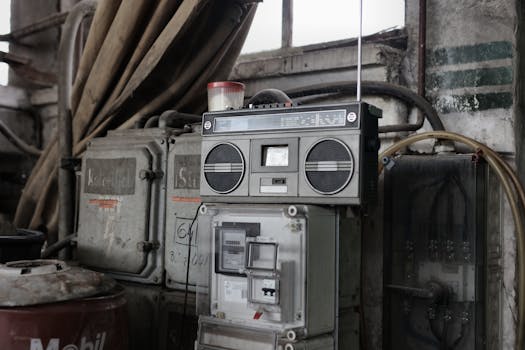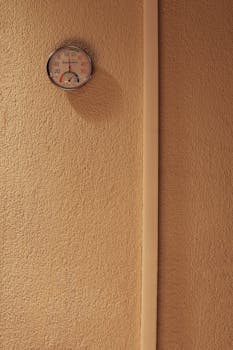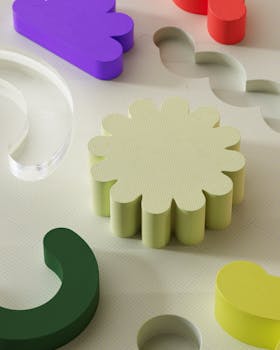The Importance of Preventing Mold and Mildew on Stored Products
Every consumer goods manufacturer or retailer understands the dread of unboxing their stored items only to find them infested with mold and mildew. The sight of these unwelcome guests signals not only damage to your valuable goods but also a loss of customer trust and potential health risks. Mold and mildew are more than just unsightly; they can lead to various health issues, including allergies, respiratory problems, and irritation. And if you’re in the business of manufacturing or retailing consumer goods, you know that damaged goods and health risks are a surefire way to customer dissatisfaction.
But what if you could prevent this scenario? What if there were proven strategies to keep mold and mildew at bay, ensuring that your stored products remain in optimal condition? The good news is, there are.
In this guide, we’ll delve into the science behind mold and mildew growth and unveil effective prevention methods. With these strategies, you’ll not only maintain the quality and appearance of your products, but also safeguard the health and safety of your customers. So, let’s dive into the world of mold and mildew prevention and discover how you can keep your stored products in pristine condition.
The Science Behind Mold and Mildew Growth
Whether you aim to safeguard your designer handbags or preserve your vintage comic book collection, understanding the conditions that stimulate mold and mildew growth is a crucial step in effective prevention.
Conditions Favoring Mold and Mildew Growth
Mold and mildew are quite the opportunists, seizing the chance to flourish whenever conditions are ripe. What’s their recipe for success? They thrive in environments that are damp, warm, poorly lighted, and lack proper air circulation.
Mold spores are omnipresent, invisibly floating in the air, waiting for the perfect opportunity to settle down and multiply. These microscopic organisms can grow on a wide variety of surfaces, especially those that offer an abundant food source. Natural fibers such as cotton, linen, and leather, as well as wood and paper, are prime real estate for molds. Even ordinary dust can provide a feast for these fungi.
However, it’s not just about the food. Moisture is the lifeblood of mold and mildew. They require moisture levels starting from around 65% relative humidity (RH) to prosper. But even at a lower RH, the growth rate might be reduced, but not entirely eliminated.
The Role of Humidity and Temperature in Mold and Mildew Growth
Temperature plays a key role in mold and mildew proliferation. These organisms cannot control their own temperature, and therefore depend heavily on the environmental conditions. Most common molds prefer room temperature, but some species can survive in a wide range of temperatures, from freezing to sweltering.
Humidity control is a critical factor when it comes to mold and mildew prevention. Excessive moisture can result from humidity condensation from the air onto cooler surfaces, often indicating that repairs or additional insulation are needed. If your products are stored in a damp basement or a non-air-conditioned room, they are at a higher risk of mold contamination.
By understanding the science behind mold and mildew growth, you can take targeted steps to ensure your stored items remain in top-notch condition. In the following sections, we will explore proven strategies and effective solutions that you can employ to keep mold and mildew at bay.

Preparing Your Items for Storage
Proper preparation of your items for storage is the first line of defense against mold and mildew. This involves ensuring that your items are clean and dry before storing, choosing the right containers for storage, and packing and sealing them properly.
Ensuring Items are Clean and Dry Before Storing
Mold and mildew thrive in damp environments, so it’s vital to ensure all items are thoroughly cleaned and completely dry before storing. Even a tiny amount of residual moisture can create an optimal breeding ground for mold and mildew. Whether it’s clothing, leather goods, or wood products, each item should be free of dirt and moisture. This not only prevents mold and mildew growth but also helps maintain the quality of your products.
Choosing the Right Containers for Storage
The choice of storage container plays a crucial role in preventing mold and mildew. For items such as books, breathable, acid-free boxes are an excellent choice as they prevent the intrusion of moisture. For clothing, vacuum-sealed bags offer an air-tight solution, protecting your items from humidity and dampness. The right container can effectively block the conditions that mold and mildew need to grow, preserving the integrity of your stored products.
The Importance of Proper Packing and Sealing
After ensuring your items are clean and dry, and choosing the right container, proper packing and sealing are crucial. Packing your items tightly and using internal lids can create an airtight environment inside the box, preventing the entry of moisture. Using a strong airtight lid, such as a depressor seal, and wrapping duct tape tightly around the outside of the lid can provide optimal protection. It’s also worth adding desiccants, like silica gel packets, inside the containers to absorb any residual moisture.
By taking these steps, you can create a storage environment that’s inhospitable to mold and mildew, ensuring your products remain in pristine condition.

Effective Strategies to Prevent Mold and Mildew in Storage Units
Mold and mildew are silent threats that can wreak havoc on your stored items. However, there are several effective strategies that you can employ to prevent these pesky fungi from damaging your products.
Utilizing Desiccants and Anti-Microbial Products
One of the most effective ways to prevent mold and mildew in your storage units is to make use of desiccants and anti-microbial products. Desiccants help to control moisture levels, a key factor in the growth of mold and mildew. They work by absorbing excess moisture in the air, creating an environment that is too dry for these fungi to thrive. Anti-microbial products, on the other hand, prevent the growth of mold and mildew by killing them at the microscopic level.
Importance of Airflow and Ventilation in Storage Units
The importance of airflow and ventilation in preventing mold and mildew cannot be overstated. Good ventilation helps to keep the humidity levels low, making it difficult for mold and mildew to grow. To improve ventilation, avoid cramming items too closely together. Leave some space between items to allow for air circulation. It’s also a good idea to keep items off the floor and avoid placing them directly against the walls of the storage unit.
The Role of Vapor Barriers in Preventing Mold and Mildew
A vapor barrier is another excellent tool in your arsenal against mold and mildew. It works by creating a physical barrier that prevents moisture from seeping into your storage space. When installed correctly, a vapor barrier can effectively keep your storage unit dry and mold-free. This lightweight membrane can be installed under the floor or on the warm side of the storage unit to provide optimal protection against moisture.
The Benefits of Climate-Controlled Storage Units
Lastly, consider investing in a climate-controlled storage unit. These units maintain a constant temperature and humidity level, making them an inhospitable environment for mold and mildew. Although they may cost more than standard units, the peace of mind they provide is well worth the investment. Not only do they protect your items from mold and mildew, but they also safeguard them from other environmental hazards such as extreme temperatures and pests.
Implementing these strategies can go a long way in ensuring that your items remain in pristine condition during storage. Remember, prevention is always better than cure, and investing in these measures now can save you a great deal of time and money in the long run.

Regular Maintenance and Inspection of Storage Units
Proactive care is the key to maintaining a mold-free environment. Regular maintenance and inspection of your storage unit can significantly minimize the risk of mold and mildew growth.
Checking for Leaks and Measuring Humidity Levels
Combatting mold and mildew begins with safeguarding your storage unit against leaks and high humidity levels. Regularly inspect your storage unit for any possible leaks. Be thorough in your inspection, looking for gaps, holes, or cracks that could allow water to seep in. Even the smallest cracks can put your stored items at risk.
In addition to leaks, it’s essential to keep a close eye on the humidity levels inside your storage unit. High humidity levels, typically above 50%, can lead to mold growth. Consider adding a relative humidity meter inside your storage unit to monitor the levels. If the humidity level is high, take immediate action to reduce it, such as using dehumidifiers or increasing ventilation.
Identifying Early Signs of Mold and Mildew
Early detection is crucial in preventing mold and mildew from damaging your stored goods. Mold typically appears as a fuzzy substance in various colors, including black, red, or green. Mildew, on the other hand, can appear as small white or brown dots on the surface of items.
Conduct regular visual inspections of your storage unit for any signs of mold and mildew. If you spot any, seek professional assistance to remove it.
Regular Cleaning and Replacement of Desiccants
Cleanliness is your first line of defense against mold and mildew. Regularly clean high-humidity areas within your storage unit, including the corners and the floor.
Additionally, if you use desiccants, like silica gel, to absorb moisture, remember to replace them periodically. Desiccants can only absorb a limited amount of moisture before they become saturated. Regular replacement of these drying agents can ensure that they continue to keep your storage unit dry and mold-free.
By incorporating these regular maintenance and inspection practices, you will be well-equipped to prevent mold and mildew from damaging your stored products. Your proactive measures will not only ensure the longevity of your goods but also save you from potential losses due to damaged products.

Micro-Pak Distribution USA’s Solutions for Mold and Mildew Prevention
Taking your preventative measures to the next level, the introduction of anti-microbial and anti-moisture products into your storage practices can significantly reduce the risk of mold and mildew growth on your stored items. A leader in this industry, Micro-Pak provides a range of products designed to combat these fungi from factory to retail.
Overview of Micro-Pak’s Anti-Microbial and Anti-Moisture Products
Micro-Pak offers a variety of products, including antimicrobial stickers and PE sheets, that are specifically designed to control moisture levels within packaging. By creating an environment inhospitable for mold and mildew, these products effectively protect consumer goods such as clothing, footwear, and leather goods.
In addition, Micro-Pak’s Dri Clay and Container Desiccants provide advanced moisture control solutions. Dri Clay, a 100% natural desiccant, protects packaged products from moisture-related damage. Meanwhile, Container Desiccants are designed to remove moisture from the air inside containers, effectively preventing “container rain,” a common cause of mold growth during transportation.
How Micro-Pak’s Products Can Help Prevent Mold and Mildew on Stored Products
Micro-Pak’s products are not only effective, but they are also safe for the environment, aligning with the sustainability goals of many consumer goods manufacturers and retailers. These products offer an all-around solution for mold and mildew prevention, ensuring that stored products reach their destination in the best possible condition, irrespective of the distance or the conditions of transit.
By incorporating Micro-Pak’s anti-microbial and anti-moisture products into your storage practices, you can significantly reduce the risk of mold and mildew growth. This will not only ensure the longevity of your goods but also enhance customer satisfaction by delivering products in optimal condition.
In a nutshell, prevention is always better than cure. By taking a proactive approach and leveraging innovative solutions like those offered by Micro-Pak, you can effectively prevent mold and mildew from damaging your stored goods and ensure they reach your customers in the best possible condition.
Conclusion
Recap of Proven Methods to Prevent Mold and Mildew on Stored Products
As we’ve discussed, the challenge of preventing mold and mildew in stored consumer goods is not insurmountable. Key strategies include ensuring items are clean and dry before storing, selecting appropriate storage containers, and maintaining good airflow and ventilation in storage units. The use of desiccants and anti-microbial products can significantly reduce the risk of mold and mildew growth. Regular maintenance and inspection of storage units, including checking for leaks and measuring humidity levels, are essential in early detection and prevention of mold and mildew.
The Role of Micro-Pak in Ensuring Optimal Condition of Stored Products
When it comes to preventing mold and mildew on various consumer goods, it’s crucial to understand the specific needs of each material type. From clothing and household fabrics to leather goods, wood products, and even paper and books, each type of product requires a unique approach. This is where solutions like those offered by Micro-Pak Distribution USA come into play, providing an added layer of protection during storage and transportation.
Micro-Pak’s anti-microbial and anti-moisture products, including Micro-Pak® PE Sheets for polybag packed items like fabric, Micro-Pak® stickers for box-packed items, particularly footwear, and Micro-Pak® container desiccants for wood products, are designed to tackle mold and mildew at its root. They remove moisture from the air inside containers, preventing what’s known as “container rain,” a common cause of mold growth during transportation.
In conclusion, preventing mold and mildew on stored products involves a comprehensive approach that combines proper preparation, storage techniques, regular maintenance, and the use of innovative solutions like those offered by Micro-Pak. With these proven methods, consumer goods manufacturers and retailers can ensure their products remain in optimal condition, maintaining the quality and appearance of the products, and most importantly, ensuring the health and safety of their customers.

Recent Comments